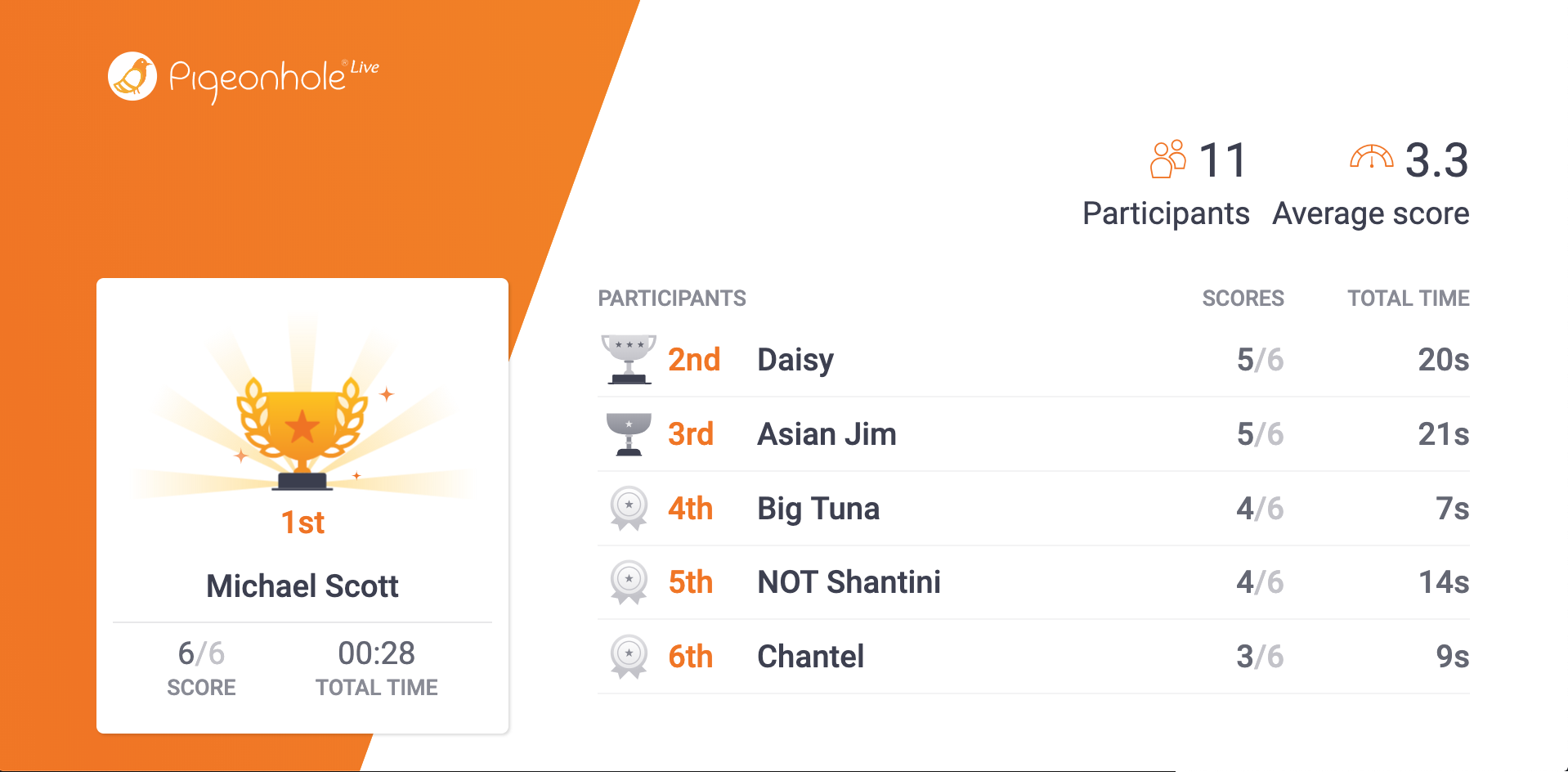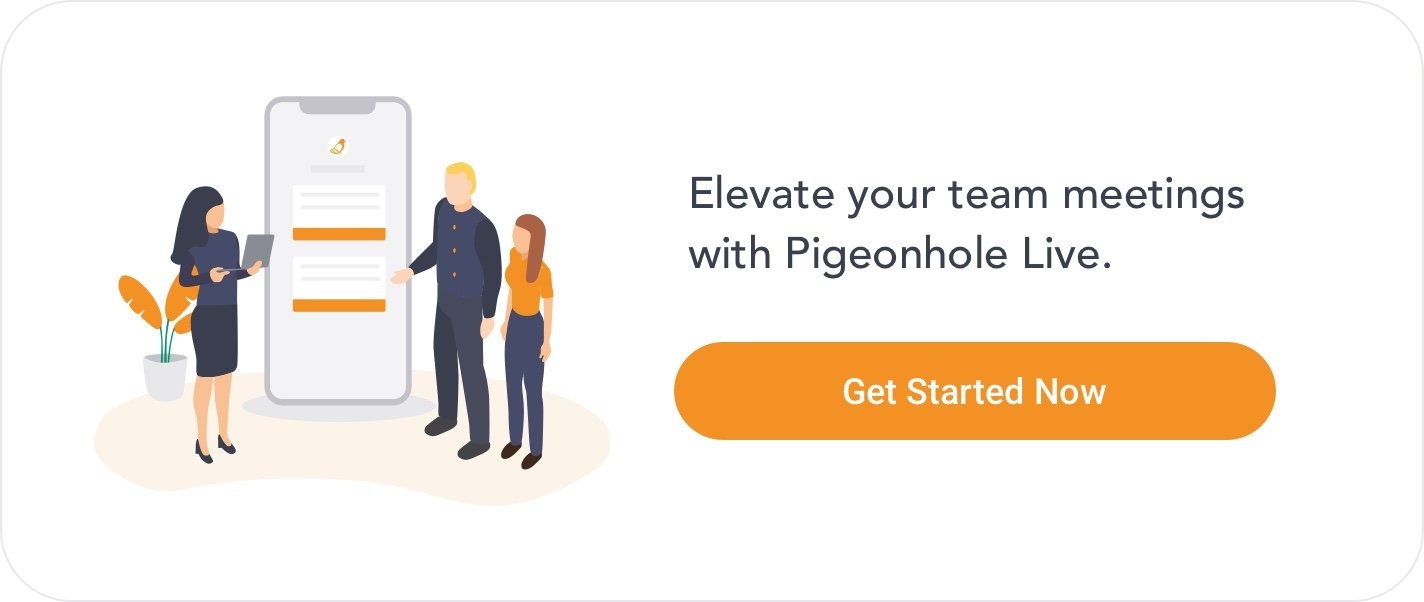70% of business professionals believe that presentations are key to succeeding in the workplace—but the same proportion also found slides-based presentations to be boring and ineffective. Microsoft even estimates that poor PowerPoint presentations are wasting as much as $250 million per day!
So how do you make PowerPoint presentations better?
By making them more interactive.
People are likelier to pay attention if they know that they’ll be asked to participate at some point. So the next time you plan a presentation, keep in mind these 7 interactive presentation ideas to keep your audience engaged and actively listening.
(While we’ll be giving some specific guidance on how to execute them in PowerPoint, all of these tips can be used on any platform or in any presentation—whether it’s to a team of four, or an auditorium of hundreds.)
1. Break the ice
Jump-start people’s interests with a fun ice breaker that sets the right mood for your presentation. We’ve compiled a list of 20 ice breaker activities you can conduct on Pigeonhole Live that seamlessly integrate into your PowerPoint slides for fuss-free execution.
If your audience consists of colleagues, we recommend Appreciation Time and Never Have I Ever—they’re great ice breakers for strengthening office relationships and helping people get to know each other better in an exciting, non-cheesy way.
2. Get people moving
Attention span plummets to zero after a mere 10 minutes. If you notice your audience dropping off, try using physical activity as a way to refocus attentions and wake them up, literally.
- Schedule regular stretch breaks—you can even appoint someone in the audience to be the “instructor” to lead the activity.
- Play Where Do You Stand? by asking your audience a question like “How familiar are you with today’s topic?” or “How much do you agree with this statement?” and getting them to move to a side of the room based on their answer.
- Use throwable mics during Q&A sessions or throughout your presentation as a way to keep people on their toes—you can reach for something as simple as a plushie, or invest in something fancier like a custom-printed Catchbox with your company logo.
3. Conduct live polls and surveys
Live polls and surveys are some of the best ways to engage audiences, and there are tons of ways you can use them to make your presentations fun and memorable.
- Run a poll at the beginning to get people thinking and aligned on your topic right from the start. For example, if your topic is on sustainability, poll the audience on how eco-conscious they believe they are on a daily basis.
- Use it just before you reveal a statistic to test what people’s assumptions are (the competitive ones in the audience will love seeing if they’re right, too).
- Conduct surveys to collect ideas and get input. For example, if your presentation is on team performance or sales targets, you can survey your audience on what incentives would best raise their motivation.
Our platform offers flexible formats like multiple-choice polls, open-ended questions, and word clouds with live results, which you can integrate into your PowerPoint slides without interrupting your presentation flow.

4. Say almost nothing in your slides
People can’t read and listen at the same time—this is referred to Cognitive Load Theory, which basically means that multi-tasking overloads the brain’s processing capacity and inhibits its ability to retain information.
In other words, the more you fill your PowerPoint slides with words, charts, and bullet points, the less likely your audience is paying attention to you.
According to Professor Sweller, the founder of Cognitive Load Theory, "PowerPoint can backfire if the information on the screen is the same as that which is verbalised, because the audience's attention will be split." So spend less time on your PowerPoint slides and more time rehearsing your presentation if you want to capture your audience’s attention.
5. Use audio and visual media
Visuals have been found to increase audience engagement by as much as 94%, so be sure to use them strategically—while keeping in mind Cognitive Load Theory.
If you’re presenting key data, try to visualise it instead of leaving it solely in table form, and add animations where appropriate. You can animate your charts directly in PowerPoint using the Animations > Animation Pane tab.
You can also consider adding appropriately humorous memes, GIFs, and videos from YouTube or Vimeo, all of which you can embed in your PowerPoint slides using Insert > Video > Movie Browser or Movie from File.

6. Allow for anonymous questions
Anonymity has been shown to improve response rates and increase truthfulness, so providing your audience with a means for anonymous engagement will encourage them to participate in your presentation.
Our live Q&A feature gives your audience the option to submit questions anonymously and upvote the questions they want answered. This way, questions will get to be addressed by priority and relevance, not on a first-come-first-served basis, and Q&A time will no longer be hogged by the most outspoken people in the group.
7. Inject some gamification
Want people to pay attention to your presentation? Give them a stake in it. 80% of learners say they are more likely to be productive if what they were doing incorporated game-like elements, and over 60% would find leaderboards and increased competition motivating.

Here are some ideas to incorporate gamification into your PowerPoint presentation:
- Conduct a quiz at the end of your presentation that summarises your key takeaways. Consider ranking the winners and giving out mini-prizes at the end to really ramp up attentiveness.
- Throw some misspelled or incorrectly used words in your slides and get people to identify them.
- Insert the company mascot throughout your slides, and every time it appears, everyone has to raise their hands. The last one to do so each time gets a point, and the one with the most points at the end has to dance the Macarena.
Making your PowerPoint presentations more interactive is a sure-fire way to hold attentions, ramp up engagement, and boost retention, so don’t squander the opportunity to inspire your audience—and maybe gain some insight from them in the process.
